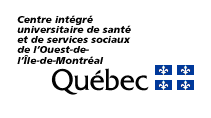2007-02-23
The following description by Douglas researcher Michael Meaney, PhD, of his recent meeting with His Holiness the Dalai Lama was published in the October 5 edition of the McGill Reporter. During the holiday season, we hope you enjoy this thought-provoking account of science and spirituality, as people from different backgrounds strive to learn from each other and achieve a shared sense of purpose.

In Spring 2004, I was asked by Richard Davidson, PhD, of the University of Wisconsin to travel to Dharmsala, India, for a five-day meeting with the Dalai Lama and his associates on the topic of brain development. This was an attractive proposition. But why me? I am only vaguely familiar with Buddhism, and my spirituality is usually reserved for reminiscences of the Montreal Canadiens teams of the late '60s or '70s or, if really seeking an epiphany, the Habs defeat over the Bruins in '7I.
"There must be more appropriate candidates," I told Davidson. Davidson implored. His work focuses on the prefrontal cortex, that great cerebral outpost of reason that should be active while you are counting to 10 or thinking why you shouldn't lash out at someone who deserves no less. For the optimist, the prefrontal cortex is what makes us human; for the pessimist, it is what keeps us from being human. Buddhists are optimists. So, too, are Montreal Canadiens fans. So I went.
I arrived in Dharmsala after 38 continuous hours of flying and driving in rural India. An hour later, I was in a glorious hall on a couch opposite senior monks, and somewhat to the right of the most avuncular man you could meet, the Dalai Lama. His Holiness and the wonderful monks were everything a follower of Tibetan Buddhism would wish them to be.
Each of five scientists was to speak with the Dalai Lama for three hours in the morning, followed by an afternoon of discussion on the central issues that related to child education. My session was the following day. Jet lag was not an option.
The Buddhists were genuinely interested in neuroscience and its implications. Buddhism is about lifestyle and consequences, and these relations can be studied scientifically. This meaningful dialog attempted to bridge movements that are hallmarks of Eastern and Western epistemology. Nevertheless, despite the sincerity evident on both sides of the hall, and many obvious points of connect, there was a prevailing lacuna. Intellectually, we could shake hands, but not fully embrace.
The reasons seemed obvious: science nerds on one side, elderly monks in flowing burgundy and saffron robes on the other; introspection versus empiricism; Eastern versus Western traditions. While such differences were obvious, I think the explanation for the gulf lay elsewhere. The breach was not of tradition, but of purpose. The Tibetan Buddhists are interventionists—they seek to heal the social and spiritual wounds of modern life. They want to help. Scientists search for knowledge and understanding. The divide between us in Dharmsala was essentially the same that I face when teaching fourth year medical students who, like Buddhists monks, are there to help. Like nurses, social workers and clinical psychologists, they are wound healers.
Which brings me back to the prefrontal cortex. The Tibetan Buddhist approach is similar to cognitive behavioural therapy, a scientifically well-validated approach to multiple forms of mental illness that target the prefrontal cortex. Last month, I was invited to
another dialog with the Dalai Lama, in Vancouver.
This time, the focus was on mental health and I prepared by watching a DVD of a discussion between the Dalai Lama and cognitive psychologist Aaron Beck, who developed cognitive behavioural therapy. Their discussion was wonderful. Here was a meeting of East and West, and on this occasion, of purpose. The Dalai Lama and Beck embraced, repeatedly. All of which underscores a unifying message of the Dalai Lama. It is not about East and West, or any such divides. It is about purpose.


